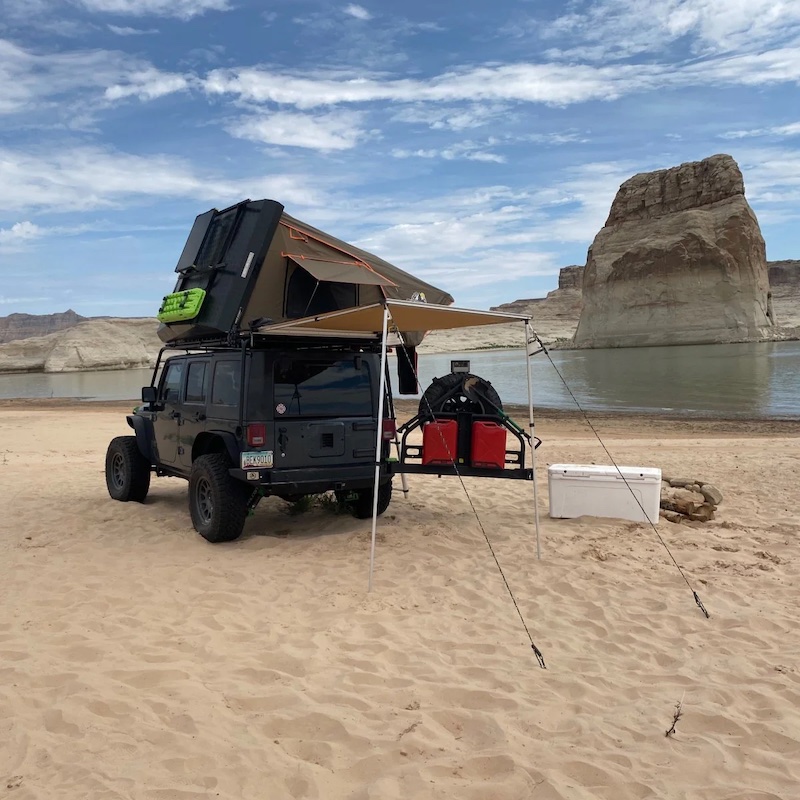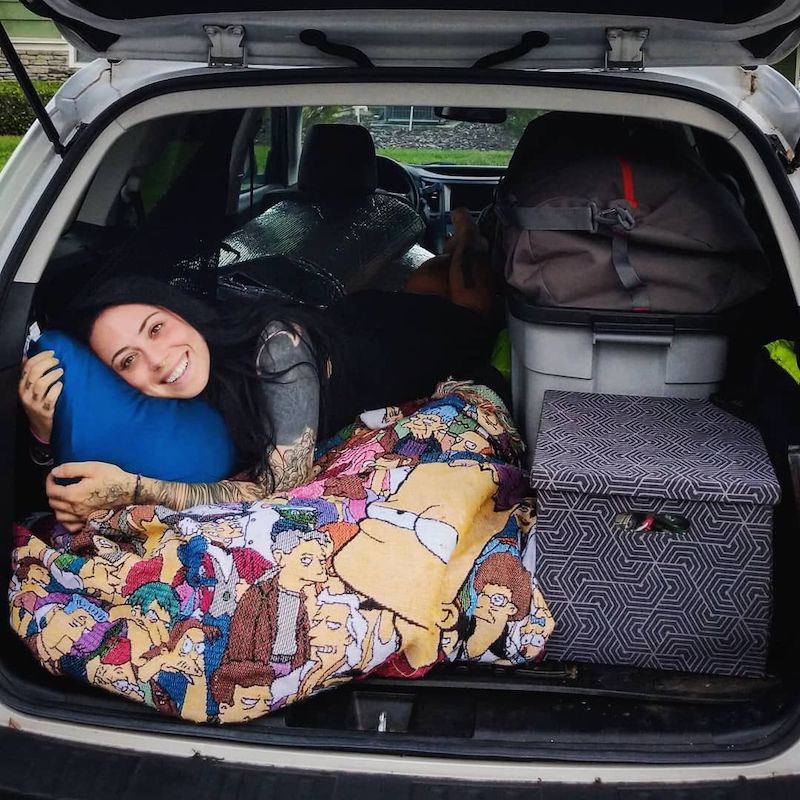Introduction:
In a world filled with constant connectivity and bustling cities, the allure of escaping into the wilderness has never been greater. While traditional camping continues to be a popular choice, a growing number of adventurers are seeking a more discreet and immersive experience through stealth camping. This unconventional approach allows one to connect with nature on a profound level, offering solitude and unrestricted encounters. Join us as we reveal the hidden gems of stealth camping, exploring its essence, defining the art of blending in, discussing equipment essentials, sharing safety tips, and uncovering the ethics behind this unique outdoor pursuit.
Part 1: Choosing the Right Spot
Finding the right spot for stealth camping is crucial. You want a spot that is secluded but not too far from civilization. You also want a spot that provides enough cover and is not easily noticeable. It’s best to scout out the area beforehand and look for spots that are hidden from view, such as behind trees or bushes.
Level 1: Factors to Consider When Choosing a Spot
When choosing a spot, there are a few factors to consider. Firstly, you want a spot that is away from people and not visible from the main road. Secondly, you want a spot that is flat and has good drainage in case it rains. Finally, you want a spot that has plenty of natural cover and is not too exposed.
Level 2: Potential Risks and Hazards
There are potential risks and hazards associated with stealth camping. You should be aware of the local laws and regulations, as well as any potential safety risks like wild animals or unstable terrain. Be sure to check for any hazards before setting up camp and take precautionary measures accordingly.
Part 2: Setting Up Camp
Setting up camp in a stealthy manner is important to avoid being detected. You want to set up your tent or hammock as quickly and quietly as possible. It’s important to keep your gear organized and limit the amount of gear you bring to avoid drawing attention.
Level 1: Setting Up Your Tent or Hammock
When setting up your tent or hammock, you want to do so quickly and quietly. Opt for a tent or hammock that is easy to set up and take down, and make sure to limit the amount of gear you bring. It’s also important to consider your surroundings and avoid damaging any plants or trees.
Level 2: Organizing Your Gear
Organizing your gear is important for several reasons. Firstly, it will help you stay organized and avoid losing anything. Secondly, it will help you pack up quickly in case you need to leave the site quickly. Finally, it will help you limit the amount of gear you bring and avoid drawing attention.
Part 3: Cooking and Eating
Cooking and eating while stealth camping can be tricky, as you want to avoid attracting attention while still making a warm meal. You can cook with a portable stove or campfire, but it’s important to be careful and avoid starting a fire that could attract unwanted attention.
Level 1: Cooking with a Portable Stove
Cooking with a portable stove is a quick and easy way to make a warm meal without attracting attention. Make sure to use a stove that is easy to set up and doesn’t require a lot of fuel. Be sure to cook with a lid on your pot to avoid the smell spreading.
Level 2: Cooking with a Campfire
Cooking with a campfire can also be an option, but it’s important to be careful and avoid starting a fire that could attract unwanted attention. Additionally, be sure to cook over low heat to avoid creating too much smoke.
Part 4: Clean-Up and Disposal
Keeping your camp area clean and tidy is important to avoid being detected. Make sure to properly dispose of all trash and pack out everything you brought with you. This includes your campfire ashes, as leaving them behind could attract unwanted attention.
Level 1: Disposing of Trash
It’s important to properly dispose of all trash, including food waste and packaging. Be sure to bring a trash bag with you and pack out everything you brought with you. Avoid leaving any trash behind, as it could attract unwanted attention.
Level 2: Properly Disposing of Campfire Ashes
Properly disposing of your campfire ashes is also important to avoid being detected. Be sure to pack out your ashes in a sealed container and dispose of them properly. Avoid leaving any ashes behind, as they could attract unwanted attention.
Part 5: Safety and Security
Staying safe and secure while stealth camping is important to avoid any potential risks or hazards. Make sure to bring a basic first aid kit and stay aware of your surroundings. Additionally, be sure to avoid attracting unwanted attention by keeping noise levels low and being respectful of the environment.
Level 1: Basic First Aid Kit
Bringing a basic first aid kit is important to prepare for any potential injuries or accidents. It’s important to bring items like adhesive bandages, antiseptic, and pain relievers. Be sure to also bring any necessary prescription medications.
Level 2: Staying Safe and Secure
Staying safe and secure while stealth camping is important to avoid any potential risks or hazards. Be sure to avoid attracting unwanted attention by keeping noise levels low and being respectful of the environment. Additionally, always be aware of your surroundings and any potential safety risks.
Part 6: Dealing with Adverse Weather Conditions
Camping outdoors means you are exposed to the elements, and stealth camping is no exception. Being prepared for adverse weather conditions is essential to ensure a comfortable and safe experience.
Level 1: Packing the Right Gear
Prepare for various weather conditions by packing appropriate gear. If rain is expected, bring a waterproof tent or tarp, waterproof clothing, and a rainfly to keep your belongings dry. In colder temperatures, pack thermal clothing, sleeping bags rated for lower temperatures, and insulating gear. Alternatively, in hot temperatures, opt for lightweight, breathable clothing and a portable fan to stay cool.
Level 2: Securing Your Shelter
To withstand strong winds or heavy rain, ensure that your shelter is properly secured. Stake down your tent or tie your tarp to nearby trees securely. Consider using guylines for added stability. Additionally, choose a campsite that offers natural protection like dense trees or hills to shield you from harsh weather conditions.
Part 7: Practicing Leave No Trace Principles
Leaving no trace is essential when stealth camping to preserve the environment and maintain the secrecy of your campsite. By following leave no trace principles, you minimize your impact and keep the area pristine for future campers.
Level 1: Proper Waste Disposal
Dispose of waste responsibly to minimize your impact on the environment. Pack out all trash, including food scraps and wrappers. Use biodegradable soap for cleaning purposes, ensuring it is at least 200 feet away from any water source. Practice proper hygiene by burying human waste at least 6 inches deep and at least 200 feet away from water, campsites, and trails.
Level 2: Leave Nature as You Found It
Respect the natural surroundings by keeping your campsite tidy. Avoid damaging vegetation and do not carve into trees or rocks. Refrain from removing natural objects from the area and leave any artifacts you may come across undisturbed. Leave the campsite in its original condition, ensuring it looks untouched when you depart.
Conclusion:
Stealth camping offers an unmatched opportunity to reconnect with nature while embracing the spirit of adventure. Through careful location selection, mastering the art of blending in, the right gear, and prioritizing safety, adventurers can experience the wonders of the wilderness on their own terms. By maintaining a strong ethical approach, we can ensure that stealth camping continues to thrive as a sustainable way to explore the great outdoors. So, step outside the camping norms, embrace the challenge, and discover the magic of stealth camping for a truly transformative outdoor experience.
Stealth camping can be a great way to enjoy the outdoors without having to worry about fees or permits. However, it’s important to be respectful of the environment and avoid attracting unwanted attention. By following these tips and being prepared, you can have a safe and enjoyable stealth camping experience.



